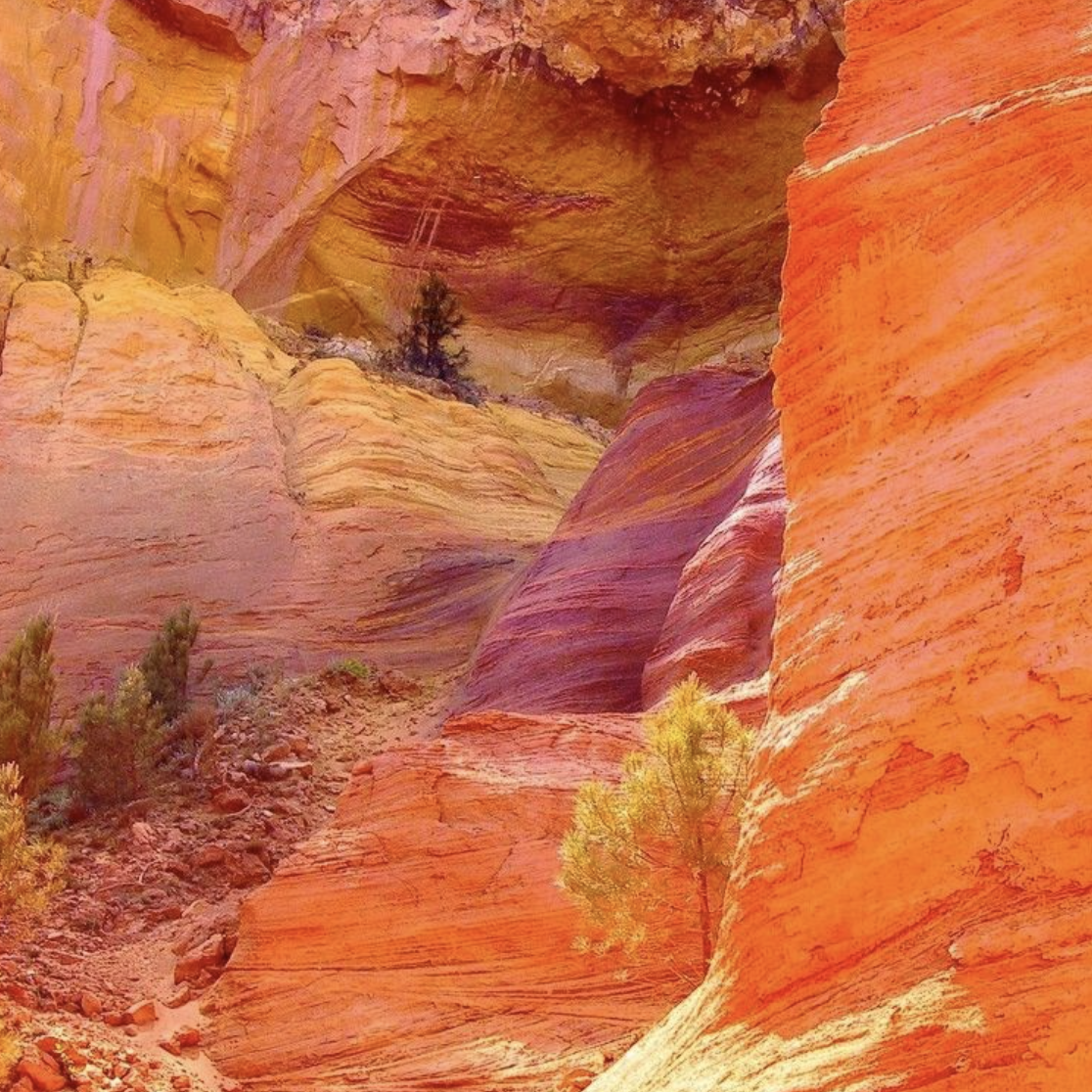Earth pigments have been used around the world from the earliest cultures of India, Africa and Australia all the way up to the present day.
The oldest human artworks we’ve discovered were made with earth pigments 250,000 years ago and the same materials have been used by every culture and on every continent since then. A recent discovery of an earth pigment paint making factory in a South African cave was dated at 100,000 years old.
Called ochre, iron oxide pigments, or earth pigments, they have been used by artists for time immemorial. Most simply, earth pigments are naturally colored soil: clay and minerals dug up and ground into a fine powder. They are then added to any multitude of liquid “binders” to make paint and art supplies.

Earth pigments typically consist of three components: mineral (iron oxide), a secondary coloring agent, and a clay base. Iron oxide is found all over the earth’s surface and it occurs in many forms and colors. It is the principal coloring agent for most earth pigments and the properties of specific types of iron oxide determine the color. These minerals are composed of varying degrees of iron and oxygen. A secondary coloring agent can also be present like calcium, manganese oxide, carbon or organic material, silica, limestone or rutile (titanium dioxide). For example, rutile (common in most clays) will make colors brighter or more yellow. Almost all earth pigments have clay as their base. Because clays vary widely in composition, they can have a wide range of effects on the pigment color as well. A common confusion that occurs is that these pigments come from plants and will biodegrade or compost. These are actually not "organic" pigments that come from plants, insects or chemical processes; these are "inorganic" pigments that are archival and don't biodegrade which is the beauty of their amazing permanence.
Ochre is often defined as a clay-based pigment that has at least 12% iron oxide, though in many parts of the world the word simply describes any pigment found in or on the ground. Mineral pigments, from crushed stones, are commonly called earth pigments as well. Yellow ochres contain an iron oxide called limonite. Ochres with hydrous (water-containing) iron oxides, like limonite and manganese can be heated to eliminate water. Doing so deepens the color, turning yellows into oranges and reds creating the colors known as “burnt” sienna or “burnt” umber (known as “calcination”). Naturally occurring red ochres are naturally richer in anhydrous iron oxide and are called hematite (Fe2O3). This absence of water is what creates a more red color

Whether they are called ochres or not, earth pigments without iron oxides have commonly been used as well. “Marine” clays that come from ancient oceanic deposits are pigmented with minerals such as celadonite or glauconite and create green, often called terre verte. They come in variations from gray/blue greens to yellow/brown greens and can be found far from the ocean, marking where the water once stood.
Climate conditions while the earth pigments are forming can have an effect on the color we see today. Red earth pigments could be a product of low humidity and high temperatures, yellow being the opposite. Grays, browns, and darker colors are potentially a result of earth buried so deeply they weren’t in contact with oxidizing influences or were darkened by the presence of organic matter. The color of the pigment reflects its past, painting a picture of where it has been and what it has been through. Artists use earth pigments to do the same. It is a way of deeply connecting to place by utilizing the soil’s history to tell its story through their work.
Our favorite quote from earth pigment expert, Heidi Gustavson, is "Earth pigments are not lifeless rocks. They are constantly circulating, they are mysterious metamorphic agents of art made by complex ecologies, biomes, volcanos, extinct creatures, fault lines, sea-floors, swamps, deserts, fertile soils, and dead people and their living waste."
After extensive testing of pigments from all over the world, Natural Earth Paint now sources their pigments from France, Italy and parts of the U.S. Despite the development of modern, petroleum based pigments in the twentieth century, earth pigments are still known to be the most archival, permanent, humidity, temperature and light resistant pigments available. They remain completely stable when subjected to a wide variety of conditions and they also have the capacity to screen harmful ultraviolet rays. To top it off, they are non-toxic and the most inexpensive pigments available. Natural Earth Paint is on a mission to help humanity re-discover the complete perfection of this phenomenal gift from our Mother Earth.
Want to read more? Check out our sources:
Chromotopia: An Illustrated History of Color
Colors from the Earth: The artists’ guide to collecting, preparing, and using them
Earthen Pigments: Hand-gathering and using natural color in art
Meet the soil scientists using dirt to make stunning paints
Interested in learning about more Natural Earth history? Visit our History page!
Follow us on Instagram, Facebook, and Pinterest for more natural inspiration.








